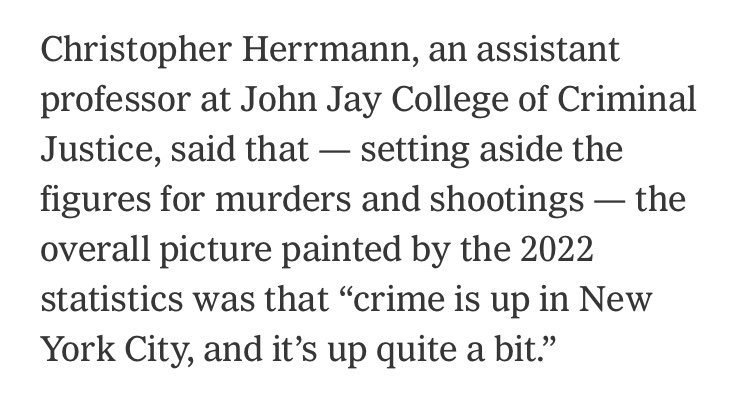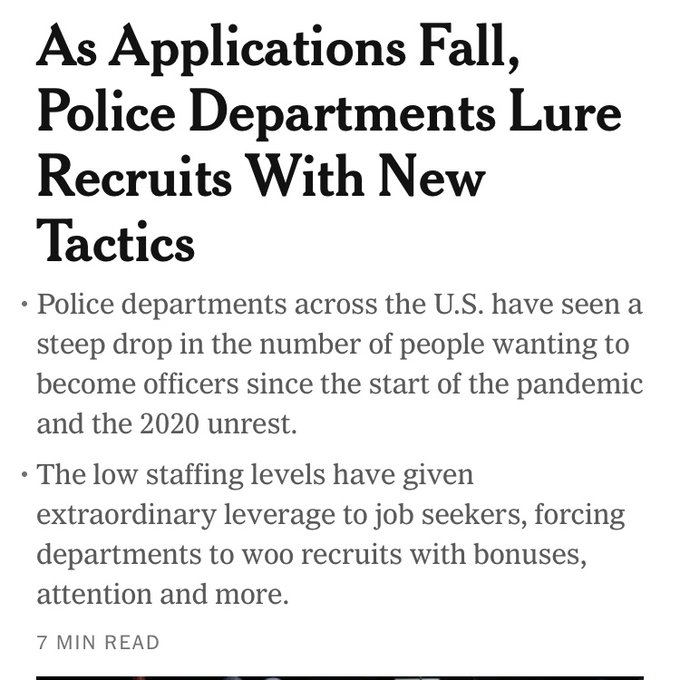
THREAD. One of the main ways the news media distorts our perceptions of public safety is through decisions about the volume of news stories. This is one of the most important, but least discussed aspects of copaganda. I try my best to describe why it is important with examples.
A few years ago, when I was investigating the rise of modern debtors’ prisons across the U.S., I had a conversation with a news editor that I’ll never forget.
I explained that 100,000s of human beings were being jailed solely because they owed debts.
I explained that 100,000s of human beings were being jailed solely because they owed debts.
I asked the editor to do a story on it. The editor declined. Why? According to the news outlet, another reporter who I had worked with had “already covered the debtors’ prison story a few months ago.”
I have had many dozens of conversations like this since then, but that was the first time in my career I had been forced viscerally to confront questions about what is considered “newsworthy” and what isn’t.
The editor’s explanation also raised for me several important questions about the nature of news. What does it mean to have “already covered” a massive social problem that continues happening unabated to new people each day?
Just recently, I got a similar response from a different editor when I asked a major news outlet outlet to do a story on the more than 400,000 human beings jailed across the U.S. for the holidays because their families cannot pay cash bail.
These were rampant constitutional violations that make everyone in our society less safe, cost tens of billions of dollars, spread infectious disease, and devastate families for generations. The editor told me: “There have been other good stories on the bail system this year.”
And so, I followed with great interest the last few weeks when, in a two-week period in December 2022, the New York Times published three long articles about a supposed “shortage” of police officers in the United States. 

One of the most overlooked aspects of contemporary news analysis is an examination of how the sheer volume of certain news stories distorts our understanding of what is important.
To illustrate the point in a general way, I picked a few examples. Let’s start with the low-hanging fruit. Courtesy of Washington Post journalist Philip Bump, take a look at how the volume of crime segments on Fox News, CNN, and MSNBC ballooned as the U.S. neared election season 



What you are seeing is that Fox News is a sophisticated political propaganda operation that understands the importance of news volume. As many others have pointed out, the volume of this coverage is not linked to factual reality in terms of police-reported crime rates.
To take another example, below you’ll find a chart from a fantastic Bloomberg data investigation by two reporters who looked at the volume of “violent crime” coverage. Take a look at what happens to local news stories in New York City when Eric Adams is elected Mayor: 

Now take a look at this graph from the Bloomberg journalists. It shows that the volume of mentions of shootings in New York media was not connected to the number of shootings: 

Finally, in summer 2021, a local journalist posted a 21-second video of a shoplifting in San Francisco. This was during a PR push by Walgreens, cop unions, far-right media, and billionaire-funded DA recall activists to drive fear of “retail theft” that news media weirdly adopted.
The fantastic journalists @FAIRmediawatch did an analysis and found that this single video spawned 309 separate articles about the Walgreens incident in the 28 days after it was posted.
The researchers found that there was not a single article about a multi-million dollar wage theft settlement paid out by Walgreens to its CA employees. (On January 5, 2022, a Walgreens executive admitted publicly that the company had overblown their claims about retail theft.)
For perspective, think about how few articles are in major outlets on far larger property crimes that lead to enormous suffering/death: $50 billion in wage theft, $830 billion in securities fraud, and $1 trillion in tax evasion each year to take just a few white collar crimes.
For months though, rather than reporting on these larger problems with high volume news, there was a frenzy of article after article about a crisis of retail theft. Take a look at a screenshot from my phone of the homepage of the San Francisco Chronicle on November 22, 2021: 

First, I want to make a meta point: crime coverage broadly is in some respects a good illustration of this phenomenon. The volume of news stories every day on police reported crimes dwarfs their relative importance on any conceivable metric of objective global and domestic harm.
Many people in the U.S. are woefully uninformed about matters of extreme importance, and yet daily news stories in major corporate media inundate them with stories about individual crimes.
While there might be one story yearly on a local TV news station about air pollution deaths or unsafe drinking water in an area or poverty or lack of access to health care or price gauging of life-saving medicines, there are daily stories about crimes.
This choice of news volume affects which harmful things we feel afraid of and which we never think about.
Second, news volume re: public safety is not driven by transparent, accountable principles. News outlets make myriad subjective judgment calls pursuant to processes that are not made public to readers/viewers and that are often not written down or audited after the fact.
According to editors I’ve spoken to, outlets do not evaluate how many stories of certain kinds featuring certain sources get published in any given time period. It’s remarkable that a field that is so important to has not developed more rigorous accountability practices.
Instead, volume of safety news is driven by other factors: police PR spending, relationships btw reporters/sources cultivated through consultants and social circles, timing of political events, cop union negotiations, cultural interests of journalists and their social groups, etc
More generally, amount of coverage is driven by political agendas of prominent people who can use their platform to lead the media. Editors have, over the years in my conversations with them, justified covering objectively less important things by saying that they are simply...
...covering what the elected politicians are talking about. But here’s the bottom line: in any of these cases, it’s not some objective analysis of total global human and environmental well-being, safety, and death. It’s subjective.
This subjectivity means lots of biases. For example, local news seems to think that a bad thing is worthy of high volume coverage if poor people are doing it—always, but especially if poor people are doing the bad thing to rich people.
But when rich people are doing something bad to hundreds of thousands of poor people, it’s viewed as a niche story for a single investigative piece, not daily breaking news that the outlet must make sure everyone is aware of.
In my experience, reporters and editors use a lot of little tricks to tell themselves that these decisions are “objective.” There are so many ways to make a story seem fresh when ultimately it is the same story.
Thus, reporters tend to use these tricks to explain why this shoplifting of a Rolex is different from last week’s shoplifting of a deodorant by a different person. But when writing about systemic constitutional violations in the money bail system, for example, reporters...
...have often told me that it’s the “same story” when a judge violates the constitutional rights of the Rolex thief in the same way as a different judge violated the rights of the deodorant thief.
When doing systemic justice work, those of us to who talk to the media a lot know that the onus is always on us to come up with a new angle to make the story seem different.
This is really a bad situation if the story you need to tell in high volume is that our society continues to do a lot of the same things every day that are really really bad and that harm the world’s vulnerable people, animals, and ecosystems in basically the same ways every day.
I wrote this up with links, more analysis, and examples in my newsletter. It's always free, with optional donation to support the civil rights work we do @CivRightsCorps to shine light on how ineffective and violent the criminal punishment bureaucracy is. equalityalec.substack.com/p/the-volume-o…
• • •
Missing some Tweet in this thread? You can try to
force a refresh












